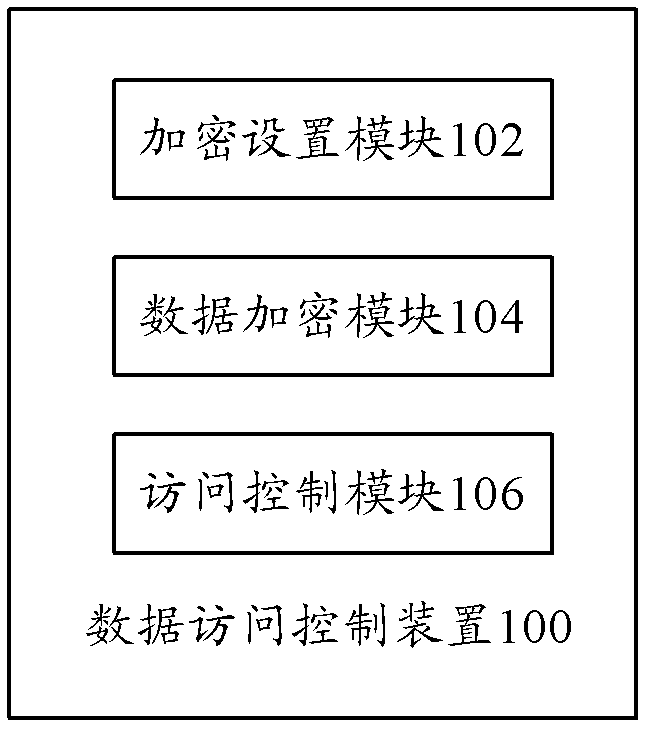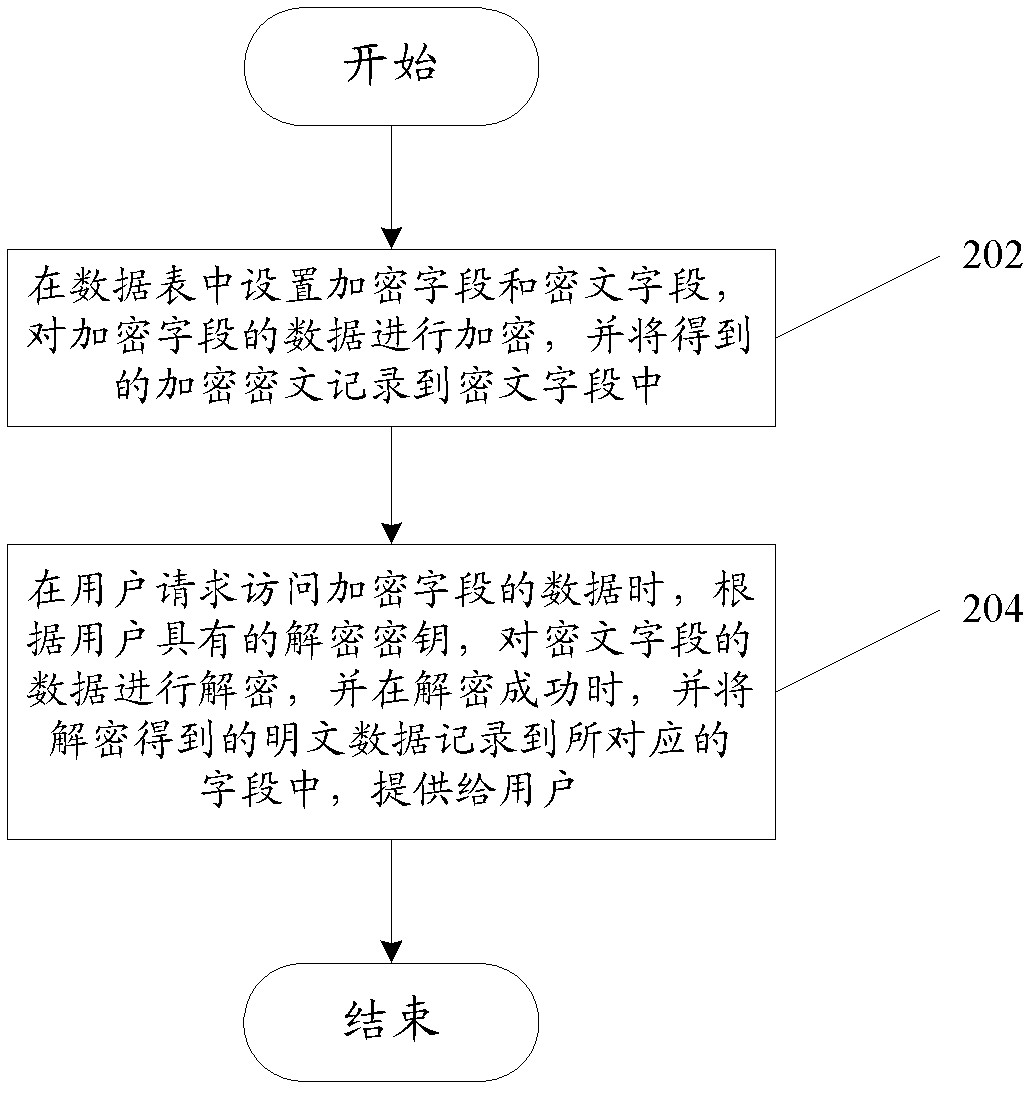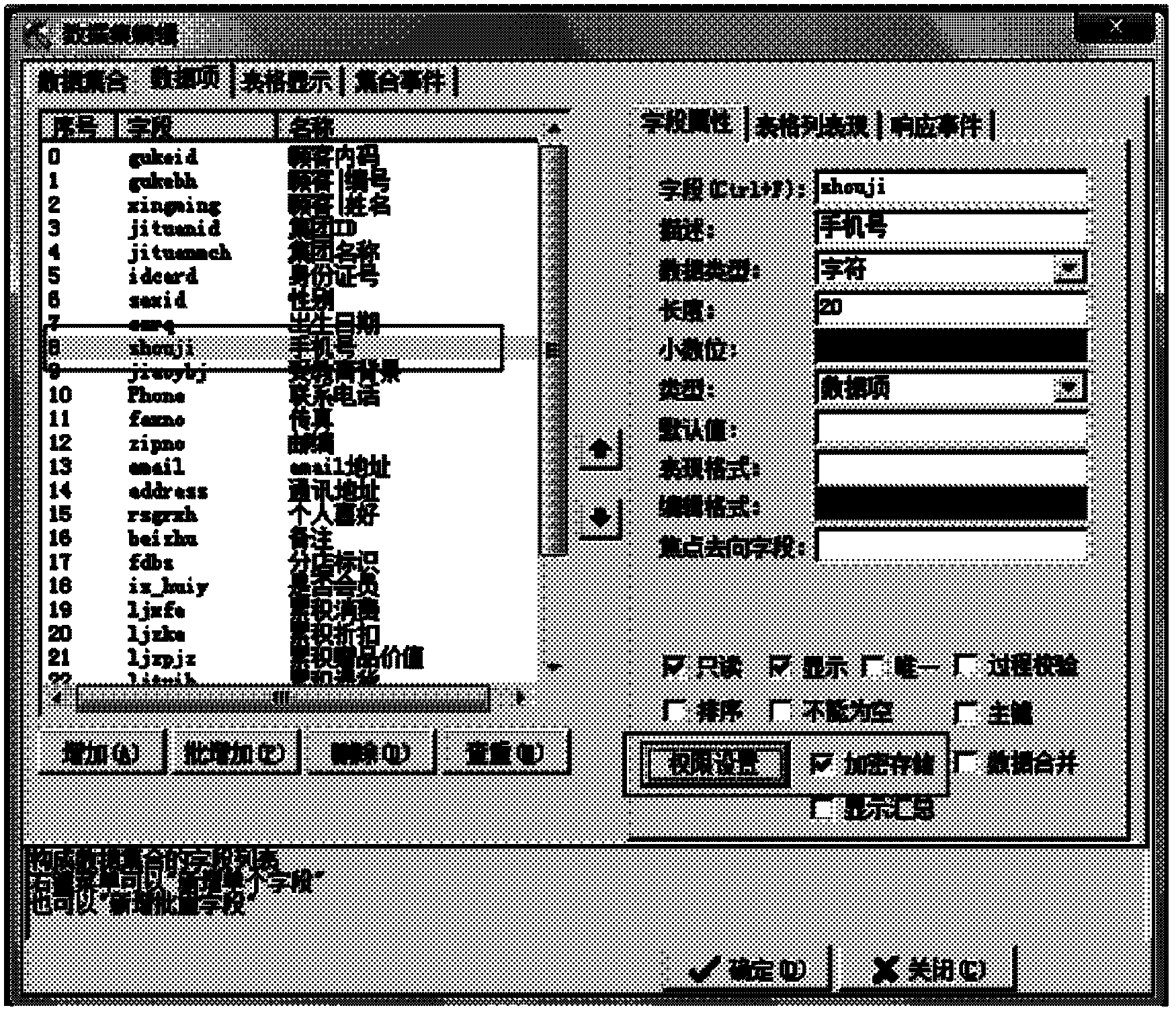Data access control device and data access control method
A data access control and access control technology, applied in the computer field, can solve the problems of relatively high encryption key security requirements, hidden dangers of data security, and high database requirements, and achieve the effects of convenient and flexible control, ensuring security, and reducing computing pressure.
- Summary
- Abstract
- Description
- Claims
- Application Information
AI Technical Summary
Problems solved by technology
Method used
Image
Examples
Embodiment Construction
[0032] In order to understand the above-mentioned purpose, features and advantages of the present invention more clearly, the present invention will be further described in detail below in conjunction with the accompanying drawings and specific embodiments.
[0033] In the following description, many specific details are set forth in order to fully understand the present invention, but the present invention can also be implemented in other ways different from those described here, therefore, the present invention is not limited to the specific embodiments disclosed below limit.
[0034] figure 1 is a block diagram of a data access control device according to an embodiment of the present invention.
[0035] The present invention provides a data access control device 100, such as figure 1 , including: an encryption setting module 102, which sets an encryption field and a ciphertext field for the data table; a data encryption module 104, which encrypts the data in the encryptio...
PUM
 Login to View More
Login to View More Abstract
Description
Claims
Application Information
 Login to View More
Login to View More - R&D
- Intellectual Property
- Life Sciences
- Materials
- Tech Scout
- Unparalleled Data Quality
- Higher Quality Content
- 60% Fewer Hallucinations
Browse by: Latest US Patents, China's latest patents, Technical Efficacy Thesaurus, Application Domain, Technology Topic, Popular Technical Reports.
© 2025 PatSnap. All rights reserved.Legal|Privacy policy|Modern Slavery Act Transparency Statement|Sitemap|About US| Contact US: help@patsnap.com



